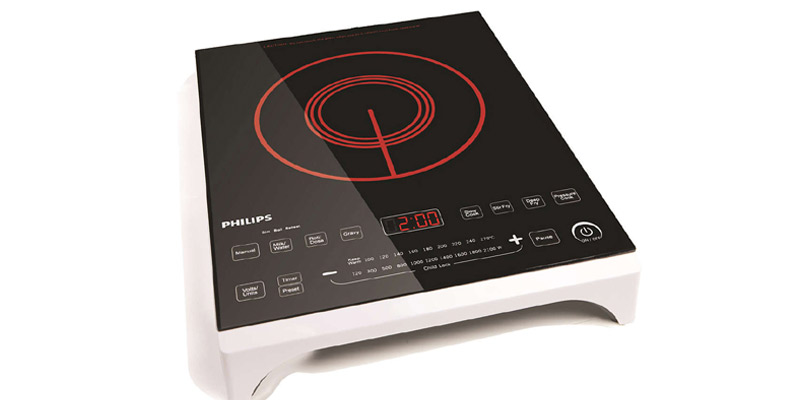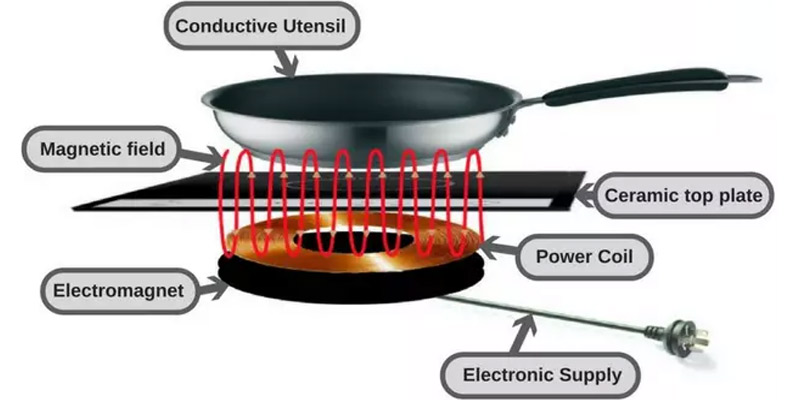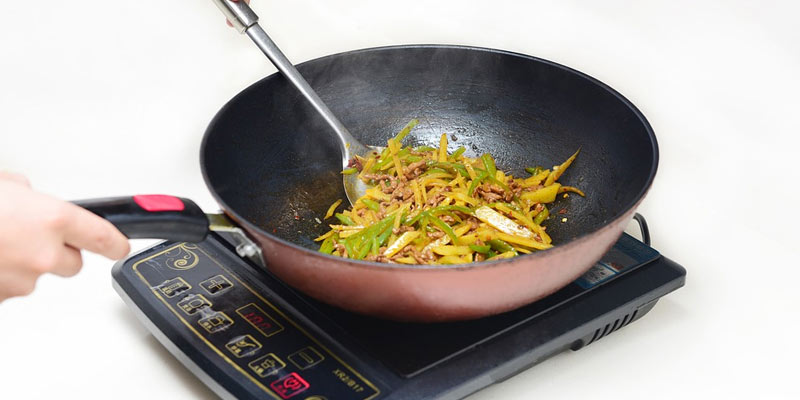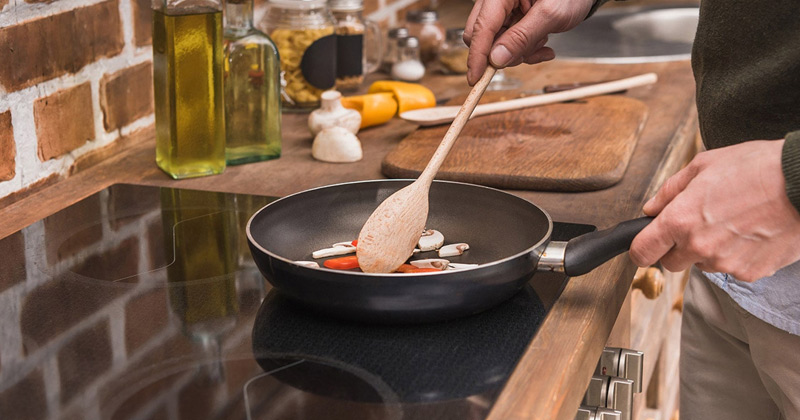Scientist Michael Faraday discovered in 1831, that a changing magnetic field generates a current. 150 years later, in 1971, the first induction cooker was presented to the world. Let’s find out, how does an induction cooker work?

In contrast to other types of stoves, the heat in the new stoves does not arise below the cookware, but directly in the bottom of the pot or pan. All well-known manufacturers now offer induction hobs because modern appliances have some advantages compared to other hobs. Cooking with induction is energy efficient, quick, and safe. But how does an induction cooker work? Let’s find out.
How Does An Induction Cooker Work?
In the case of an induction hob, the surface is made of glass-ceramic, just like a radiation-heated hob, on which various cooking zones are drawn or marked. Below this are flat induction coils made of copper wire, which generate an electromagnetic field when a cooking zone is switched on.
As soon as you put cookware with a magnetic base on it, the base is heated directly because it converts the energy of the magnetic field into heat. This process is only possible with induction-compatible pots and pans. If the bottom of the cookware is not magnetizable, nothing will happen.
As the name Induction cooker suggests, the new stove type uses the physical phenomenon of induction. Under the glass-ceramic, there is an induction coil through which a very high-frequency current flows. This alternating current causes a rapidly changing magnetic field that also penetrates the metal bottom of the pot.

According to Faraday, the alternating magnetic field causes an electrical voltage in the bottom of the pot, which in turn induces an induction current also called eddy current. This current heats the floor very quickly and finally, the food to be cooked also heats up. Due to the high frequency of the alternating field, this only penetrates about 0.1mm into the bottom of the pot.
Suggested Read: How Are Seasons Formed – The Four Seasons of the Year
What Are The Advantages of an Induction Cooker?
Because the magnetic field, which is responsible for energy generation in an induction hob, is concentrated solely on the bottom of the pot or pan, cooking with induction is safer and more energy-efficient than with other hobs.
The risk of burns is low because the heat development concentrates on the bottom of the cookware, the surrounding area heats up to a much lesser extent only through the back heat of the cookware. This means that spilled liquid such as milk will no longer burn as quickly.

In the case of induction hobs, the heat can be adjusted very finely, and the heating and reheating times are very short. For this reason, induction cooking is a very energy-saving option. You save up to 20 percent in energy. Even boiling water is faster and more energy-efficient than with a kettle.
Because the heat concentrates solely on the magnetizable base of the cookware, you can also place much smaller pots and pans on large cooking zones without wasting energy. With an electric hob, however, the entire cooking zone would heat up.
Is Cooking With an Induction Cooker Dangerous?
Magnetic fields, alternating current, eddy currents … all of this may sound terrifying at first. First of all, it needs to be clarified that induction fields are low-frequency, that is, the current frequency does not have a long-range. It is limited to the area directly above the ceramic plate, which is why the frequency when cooking does not exceed the pot.
Some people assume that the radiation emitted by the stove promotes tumor formation and causes depressive moods. To date, however, this has not been scientifically proven. Cooking with induction is considered harmless. An exception applies to people with a pacemaker. There is a certain risk here since the magnetic field is able to influence the function of the pacemaker.
Suggested Read: How do the Touchpad and Touchscreen Work?
Due to the significantly shorter heating times, the frying fat or oil also heats up faster. You should therefore only switch on the required cooking zone when you have prepared all the ingredients or finished cutting.
There are hardly any disadvantages of an induction cooker except if you live on the outskirts where there is intermittent electrical supply. Now, when you know how an induction cooker works, your unjustified fear of using it must have disappeared. It is a safer and more efficient alternative to both LPG and electrical cookers.


